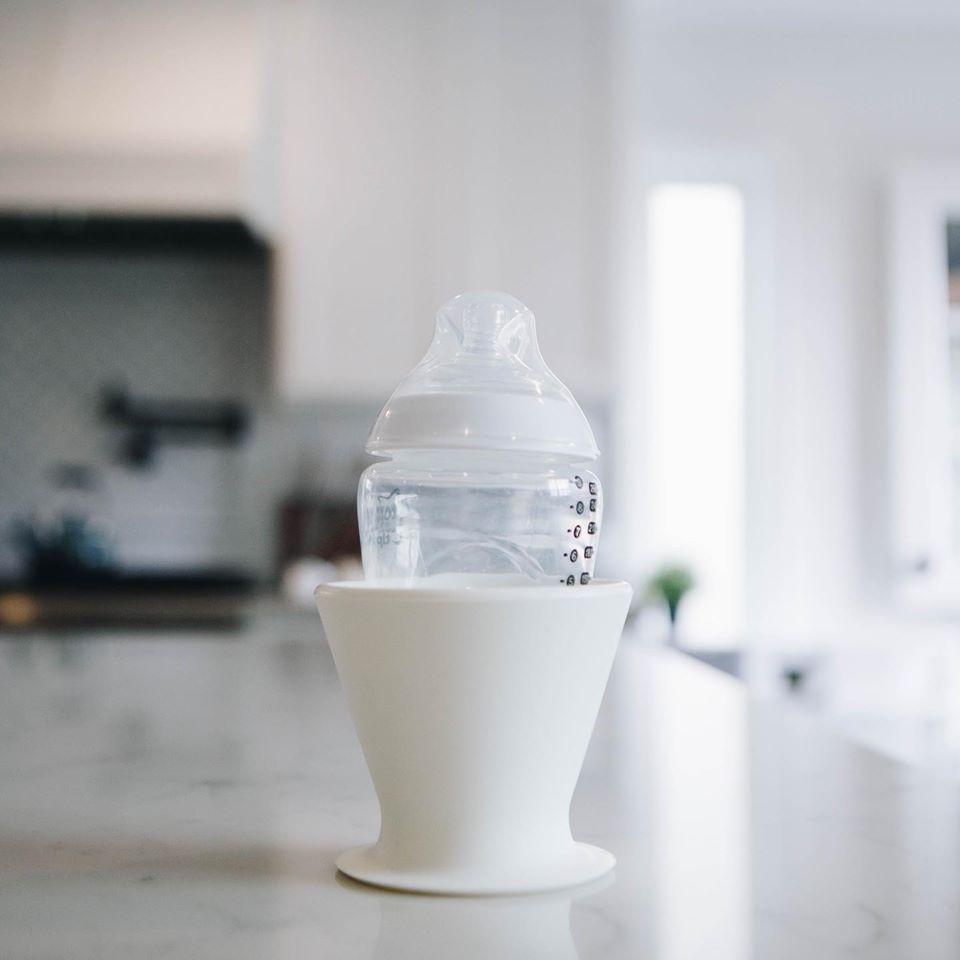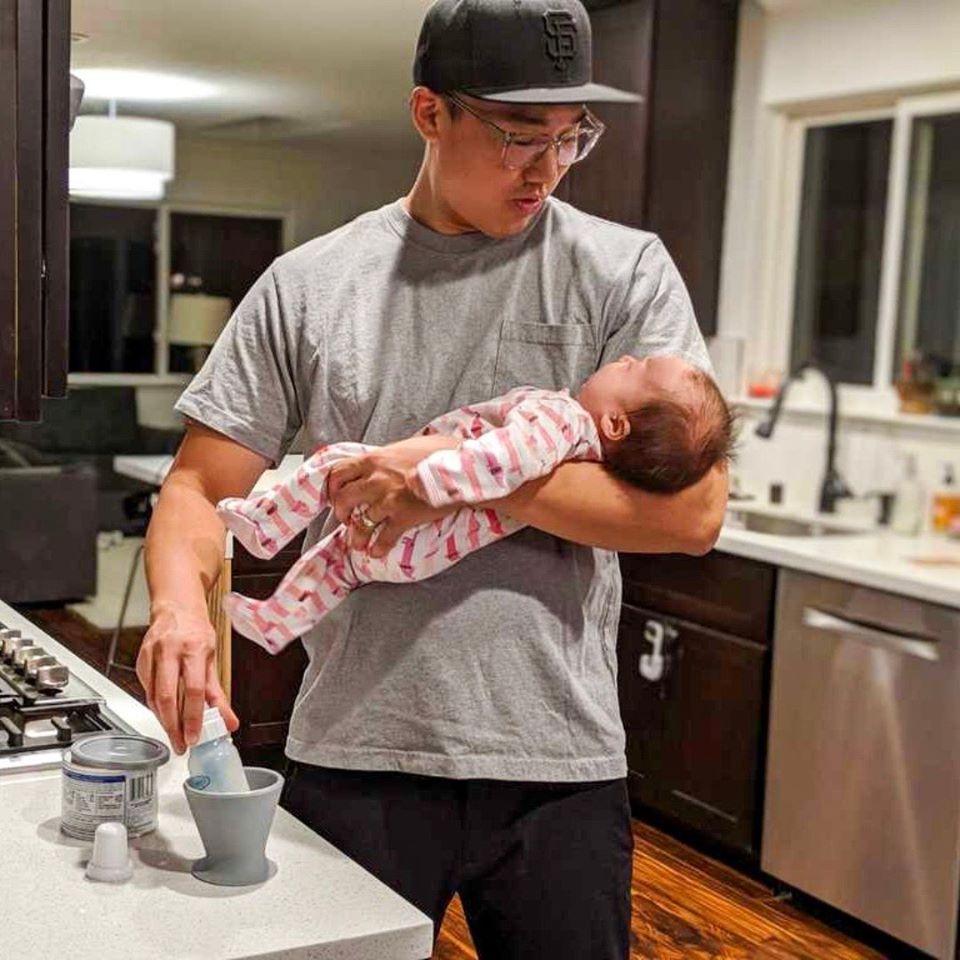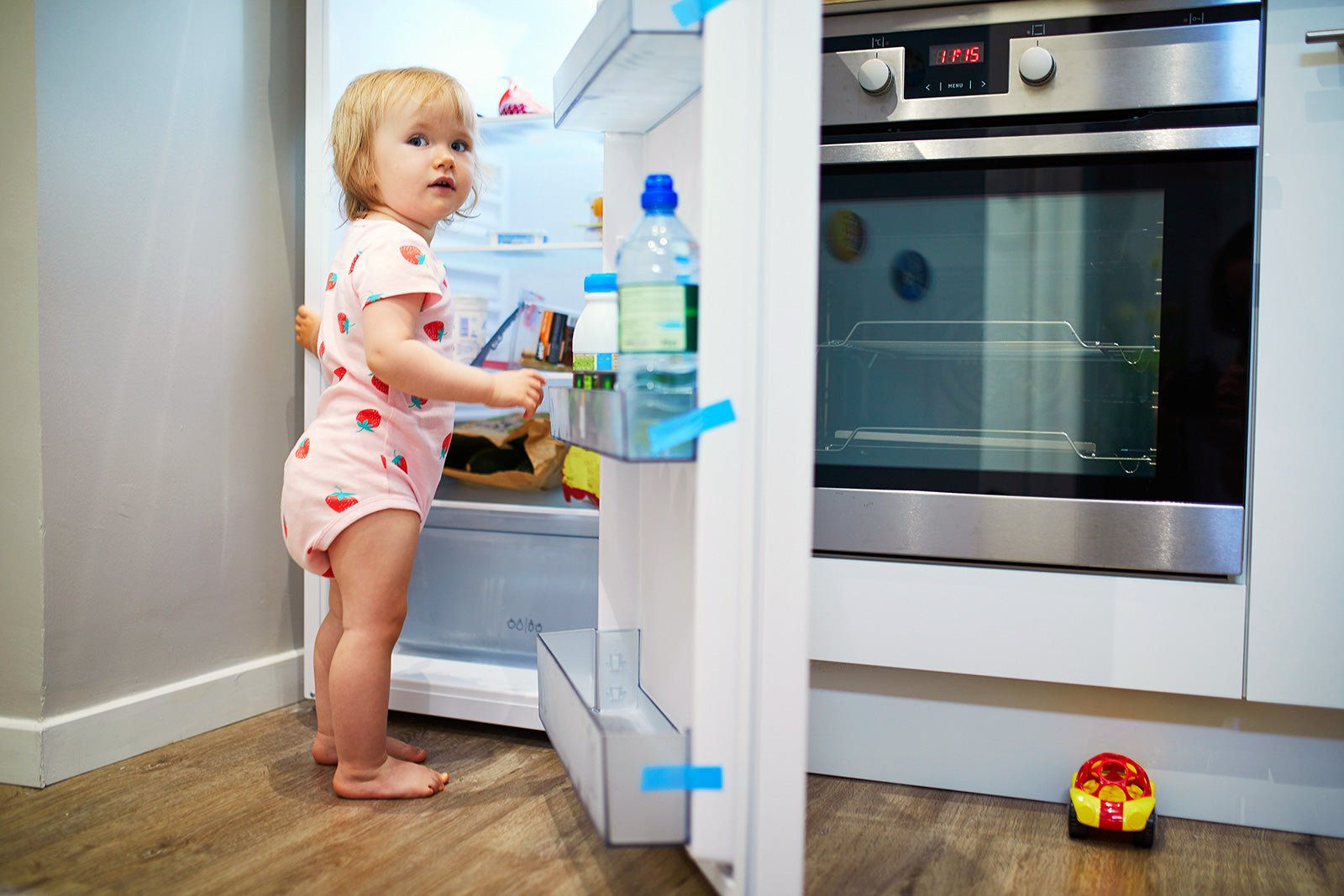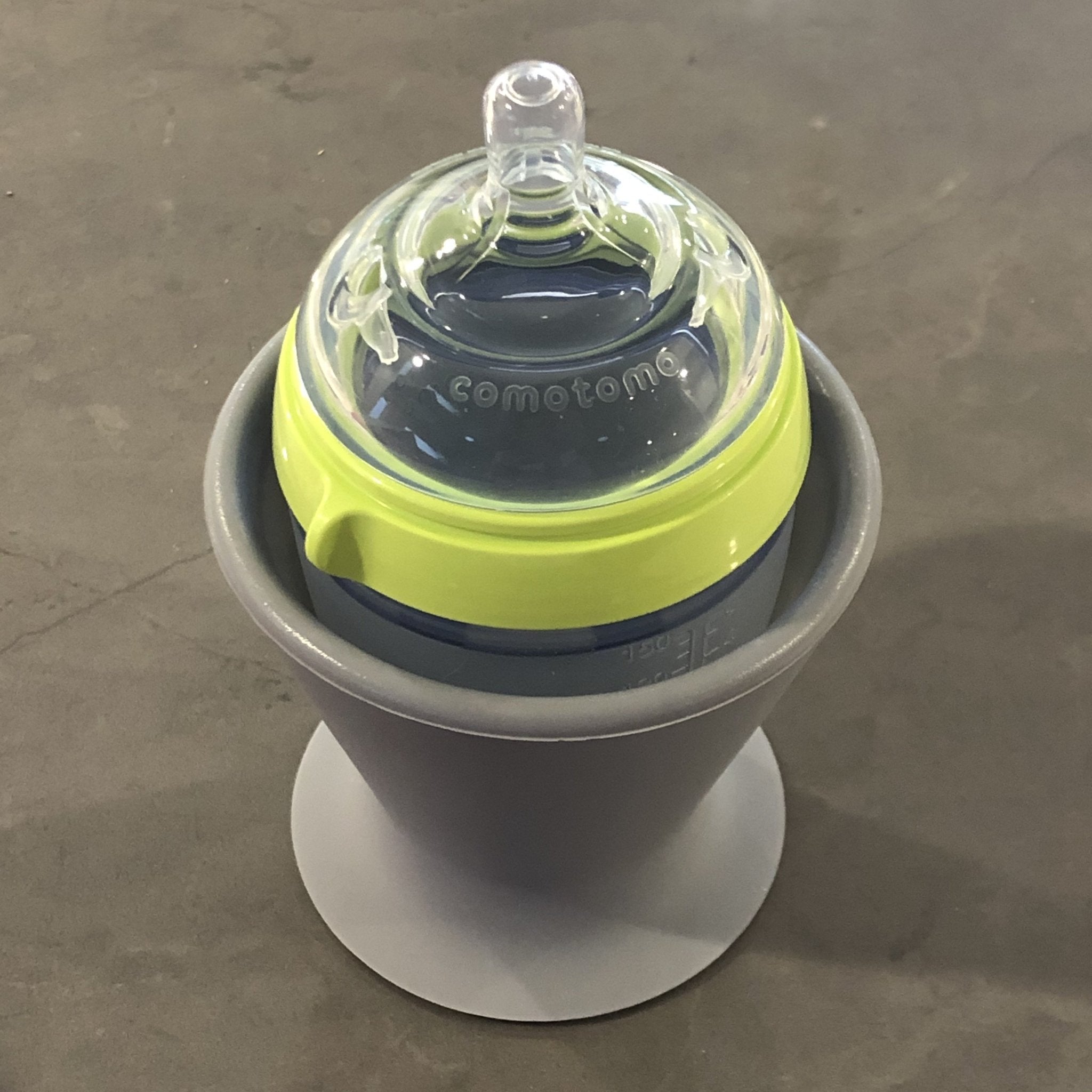How to Prepare the Perfect Bottle of Baby Formula

There are many instances where formula feeding is the best option for babies, and in some cases, it’s the only option. With less than half of infants being exclusively breastfed at 3 months old, we know that most babies will be given formula at some point in their first year. It's important to know how to properly prepare a bottle of formula so that your baby has a healthy feeding every time.
Here we'll tell you how to prepare your baby's formula bottle while keeping their health the number one priority. We've also added in our best tips to make it as easy of a process as possible from start to finish.

Steps for Making a Bottle of Baby Formula
Here are the 5 steps to safely prepare a bottle of formula for your baby.
1.) Clean and sterilize the bottles.
The first step in properly preparing a bottle of baby formula is ensuring you’re using clean bottles and bottle parts.
All bottles can be hand washed in the sink and many are also dishwasher-safe.
To hand wash:
- Begin by washing your hands.
- Completely disassemble the baby bottle so that all parts are separated.
- Rinse under running water.
- Clean each part with hot water and dish soap, (preferably with a bottle brush that can get in all those nooks and crannies)!
- Rinse again under running water.
- Let air dry on a towel or drying rack.
For the dishwasher:
- Be sure all parts are separated.
- Place bottles in the top rack of the dishwasher. Smaller parts can be secured within a closed top-basket.
- Run the dishwasher with the hot water and a heated drying cycle settings.
- Wash your hands before removing the bottle parts from the dishwasher.
What about an extra sanitization?
According to the CDC, for babies under 3 months, those born prematurely, or ones with a weakened immune system you’ll need to add an extra sanitization step. This takes place after each part of the bottle has been properly washed using the instructions above.
The 2 easiest ways to sterilize all feeding items are by:
-
Putting them in a pot of boiling water for 5 minutes
OR - Using a microwave or plug-in steam system specifically designed for disinfecting baby bottles
2.) Prepare and mix your baby’s formula.
Carefully read and follow the mixing instructions printed on the label of your chosen formula.
- Wash your hands before preparing your baby’s bottle(s).
- Measure out the water. Water will need to be added to all powdered and liquid-concentrate formula. If you’re preparing an individual bottle that you’ll give your baby right away, you can use room temperature or warm water from the tap. (See our FAQ section below to find out whether or not you should boil your baby's water prior to making their bottle.)
- Carefully scoop and measure out the correct amount of formula for the proper water-to-formula ratio. You'll likely have instructions to use an "unpacked level scoop." This just means you'll scoop out the formula and then level off the top. It's an important step in order to not over-concentrate your baby's bottle.
You can also buy premixed “ready-to-feed” formula. No additional water or mixing is required.
3.) Secure the bottle.
If you are making a single bottle, you’ll mix the water and formula right inside the bottle before it’s served. If you use a pitcher, pour the premixed amount your baby requires into the bottle.
Depending on the bottle that you choose, you may have several parts that need to be assembled. Make sure everything is properly attached or you could end up with a very leaky bottle! Screw on the lid and give it a light shake.
Pro Tip: Babies need to be held a lot, and that can make bottle prep tricky when they won’t let you put them down. The bökee is the perfect bottle-prep accessory that allows you to prepare a bottle one-handed!
4.) Warm your baby’s bottle.
Many babies much prefer warm milk. Though it isn’t required it will give your baby a much more comfortable and enjoyable feeding experience. And some babies will flat out refuse to drink their milk if it’s not warmed up. I mean, can you really blame them?!
You’ll especially want to plan on warming up the bottle to take the chill off if it’s coming from the refrigerator or a cooler.
What’s the best way to warm a baby bottle?
The easiest way to warm up a baby bottle is with a bottle warmer. If you’re at home you can use an electric bottle warmer that plugs into an outlet. There are many options to choose from that work well for this. We also know you want to spend time out of the house, and a portable bottle warmer, such as The Baby’s Brew, is a great option to have.
Pro Tip: Using the bökee and The Baby’s Brew together means you can prepare and warm your baby’s bottle without ever having to put your baby down.

If you don’t have a bottle warmer, you can safely warm your baby’s bottle in a bowl of warm (not hot!) water for about 2 minutes.
Before giving the warmed milk to your baby, shake the bottle to ensure an even temperature. Test the temperature of the milk by placing a drop on your wrist. It should feel a bit warm and never hot.
Never use a microwave to warm your baby’s bottle! It may cause hot spots that can burn your baby’s mouth.
5.) Time to feed your baby!
Once the formula is prepared and warmed, it’s ready to be given to your baby.
To feed your little one:
-
Always hold your baby (even when they’re old enough to hold their own bottle). This is important bonding time!
-
Hold your baby upright and keep their head straight. This will help with swallowing to cut down on gas and spit-up.
- Look for signs of fullness. Once your baby starts turning away from the bottle and refusing to drink, they’re sending the message that feeding time is over! Never force your baby to finish a bottle.
- Burp your baby. Gently patting your baby on the back will help release any trapped air from feeding and help your baby feel comfortable.

Formula Usage and Storage Guidelines
There are a few basic rules you need to follow for safe use and storage when it comes to infant formula.
- Store infant formula containers in a cool and dry area indoors. After the can is opened, the formula should be used within a month.
- After the powdered infant formula has been prepared, it should be used within 2 hours. Once feeding begins, you’ll want your baby to drink it within the hour.
- If your baby doesn’t drink the entire bottle of formula within that hour, it needs to be thrown out because of the potential for bacteria growth.
- Even if you can’t completely clean your baby’s bottle right away, you’ll at least want to rinse it out with hot water until you can.
FAQs About Formula Bottle Prep
Can you reheat baby formula?
No, you should never reheat baby formula. Any leftover formula that your baby didn’t drink within a 2-hour window needs to be thrown away to avoid any bacteria contamination.
What kind of water do you use for baby formula?
Tap water is most often the safest and easiest choice of water to use to make a formula baby bottle. As long as your local water is clean and safe to drink, you can make a room-temperature bottle with it.
If your tap pulls water from a well, it should be avoided as it poses risks from bacterial infections.
Bottled water is another option. Any made in the U.S. must abide by the FDA’s water quality standards, as outlined here, and is safe to use to make formula bottles. However, it’s recommended that you boil it first unless it’s distilled. You can also use “Nursery Water” which is specifically designed to prepare formula bottles.
Should I boil water before making a formula bottle?
Typically, tap water from developed areas won’t need to be boiled before you prepare a bottle.
Verywell Family writes, “For those using tap water from public water supplies, there is little danger, as the water supply is constantly monitored and warnings are issued if there is a risk of contamination. But because babies have weaker immune systems, many parents choose to boil tap water.”
If you are unsure whether or not you should boil your baby's water in your particular area, we recommend asking your child’s pediatrician.
Can you make formula bottles in advance?
Yes! Just be sure they are stored in the refrigerator (or an insulated cooler if you’ll be away from home). Formula bottles can be refrigerated for up to 24 hours or stored in a cooler for as long as they stay cold to the touch.





